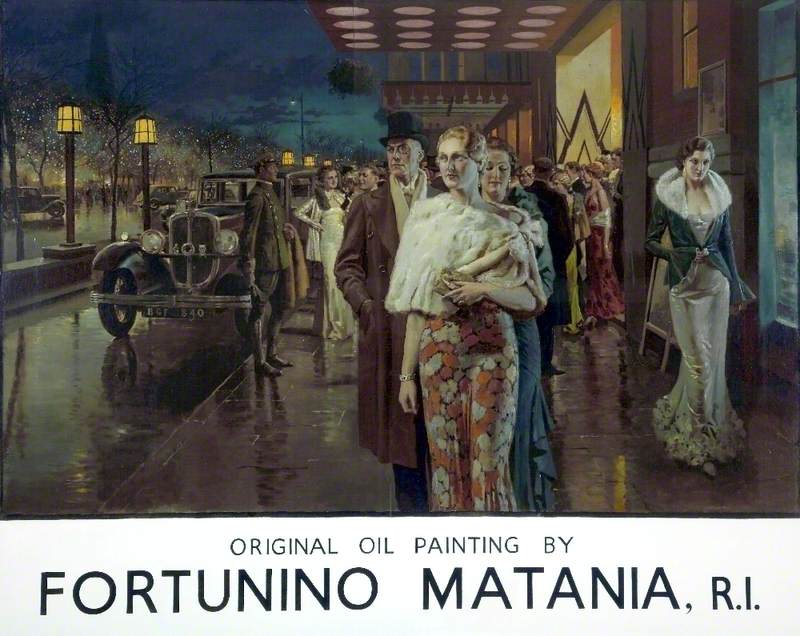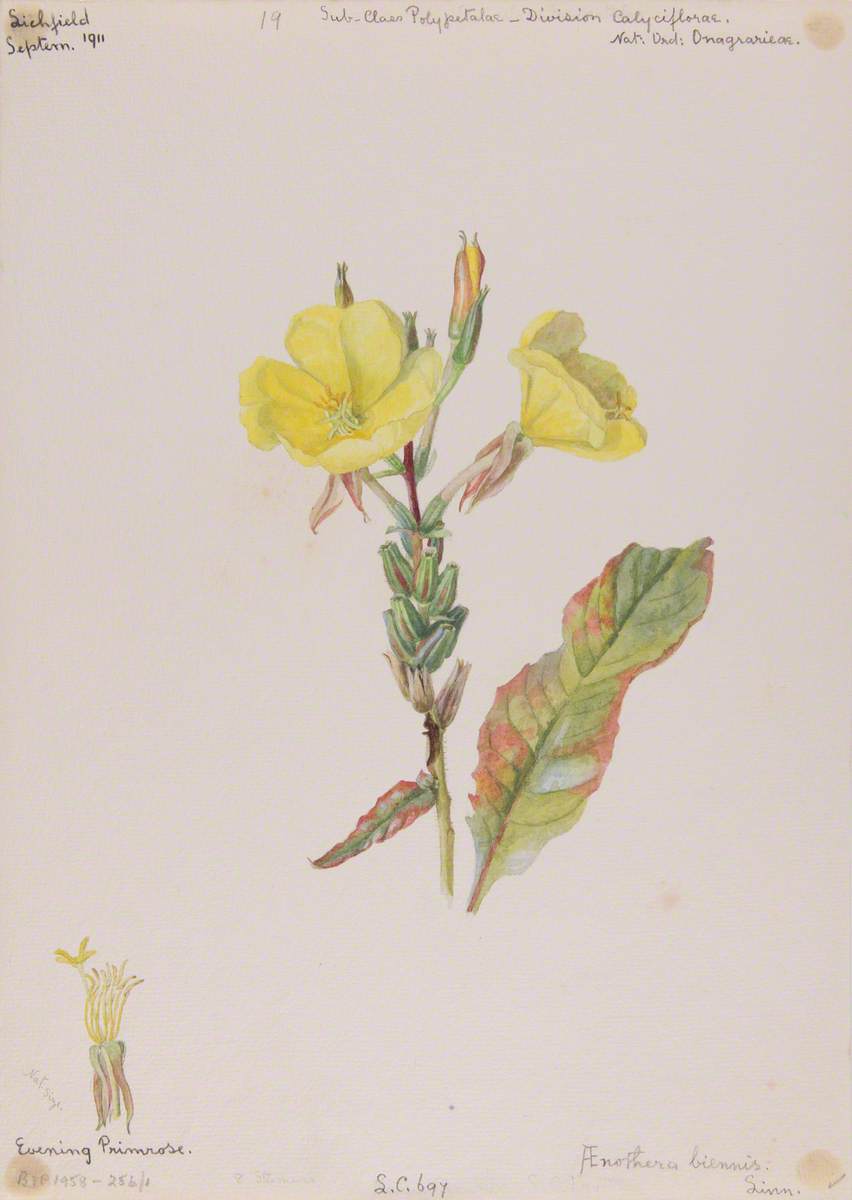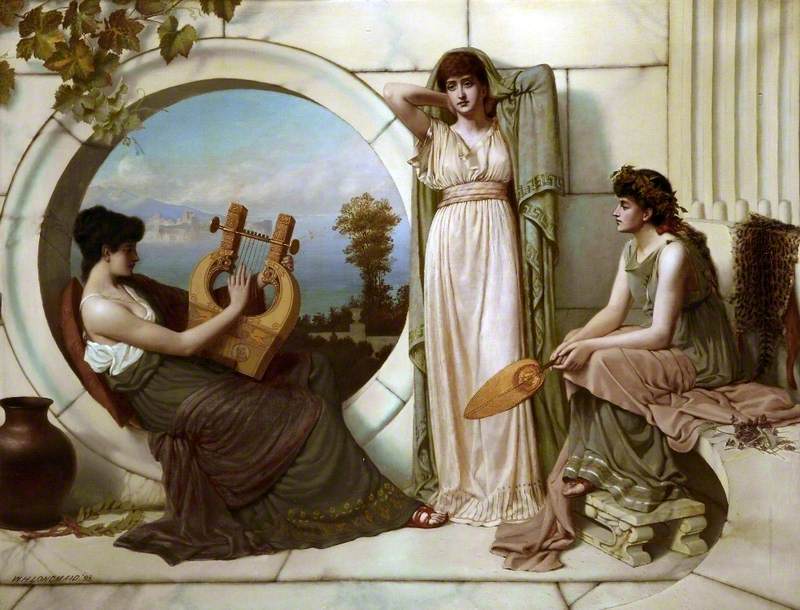Did you know our fine art collection has almost three thousand works of art dating from the 17th to the 21st centuries?
We are in the process of digitizing our collection and a selection of artworks can be seen on the Art UK website. We hope to see you in our galleries again soon, but until then, browsing our collection online is a great alternative!
Volunteer Leo Riley shares some of her favourite paintings.
Evening Primrose by Elizabeth (Bessie) Downes (1860–1920)
I have picked this work by Bessie Downes for a few reasons. Firstly, the Bessie Downes exhibition was one off the first exhibitions I got a chance to volunteer in, and so I have fond memories of wandering around the gallery reading about the many flowers Bessie recorded in our local area whilst trying to work up the courage to ask people if they need anything. Furthermore, I am drawn to how simple yet detailed these works are, with only a handful of colours being used to produce highly detailed, scientific studies of botany that Bessie would then share with the Southport Society of Natural Science. It is this creation of art for the purpose of science that makes this work different to many other floral works in The Atkinson’s possession, as instead of trying to create a certain aesthetic effect, these works are created to accurately reflect how Southport’s many diverse plant species look. Finally, the fact that it is a woman producing these pieces also adds a layer of interest for me, as the common belief is that Victorian women were not as involved in science as they are today, and so as a fellow female flower fan it’s nice to feel that connection with Bessie’s works.
Lilith by John Collier (1850-1934)
Lilith is an old favourite of many of The Atkinson’s patrons, and it is clear to see why when you see this painting. Although this work is over two metres in height there is nothing intimidating in its size; instead, the painting is soft and almost comforting, predominantly due to Collier’s fantastic attention to detail. From the lifelike texture and shine of Lilith’s hair, her expression of fondness as she gazes upon the snake and the almost friendly face of the snake in return, and the detail of the cuckoo-pint plants by Lilith’s feet, this painting is full of small details that really add to the overall feel of the work. This is particularly fascinating when you consider that, in later Jewish folklore, Lilith developed into the blueprint of many female demon-like characters – how can it be that the figure in this painting, who seems so kind and ordinary, could go on to be such a controversial and monstrous character?
Southport for a Holiday in Wintertime by Fortunino Matania (1881–1963)
This painting shows the golden age of Southport – a time when this seaside resort was the place to be seen, full of celebrities in silk and fur going into fantastic art deco buildings. Even the lights reflecting against the night sky look brighter in this oil painting by Matania. This painting fills me with a love for our seaside town in all its glory, but also brings a painful sense of yearning for a time I never knew due to the beautiful details included – the shine of the ladies’ garments in the night sky, the subtle shadow of a building amongst the dark clouds, and the many tiny lights amongst the branches of the bare winter trees all help to add a sense of glamour to the scene, highlighting Southport with all its pomp and splendour.
An Ancient Melody by William Henry Longmaid (1835–1919)
As a classicist, I couldn’t resist looking at this painting, with its Sapphic feeling and the romanticising of the ancient world and its clear blue skies, soft looking drapery, and the image of the three maidens. I find the character to the right-hand side particularly interesting, due to the subtle ways in which the painter nods to her being quite exotic – for example, the leopard skin on her seat or the headdress of leaves she wears. I am also fascinated by the woman to the centre of the scene, with her expression indicating some strong emotion that the viewer must try to decipher; I personally feel that she is in the midst of some crisis, as her expression seems to be one of deep thought and her arms behind her head seem to indicate some stress on her behalf – a feeling I’m sure we have all felt during the past few weeks. This is particularly interesting when compared with the calm imagery of the woman on the left who is fully absorbed in the playing of her instrument and seems to be the calmest member of the party. I therefore think that this painting achieves an effect of individualism within this collective scene, as each character seems to be lost in their own thoughts and emotions, and I believe that it is this that adds another layer to this romantic study of an ancient theme.
You can purchase selected framed and un-framed print reproductions from our fine art collection via the Art UK Shop. All the money raised from sales supports our ongoing collections care, public engagement programmes and learning. Shop the collection here: artuk.org/shop/atkinson
Posted on 26 May 2020 under Exhibition, General news











